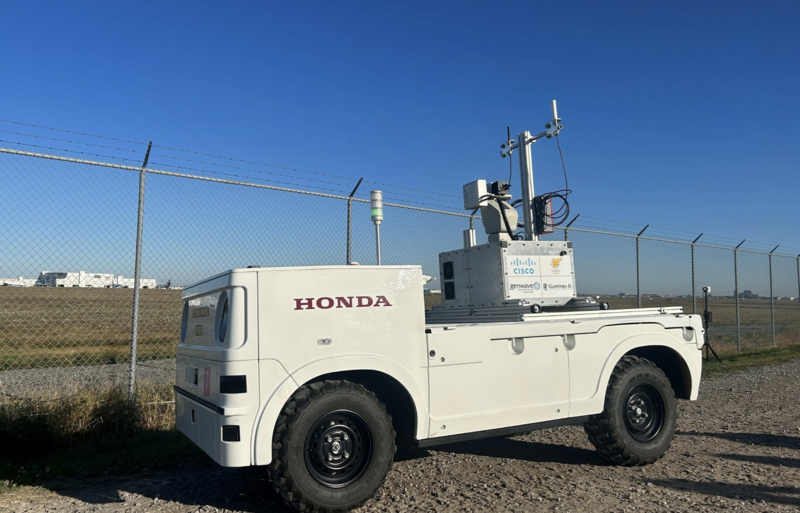After being ranked the second-worst airport in North America, Toronto’s Pearson International Airport is hoping that it can at least be one of the safest.
Driving the news: Canada’s busiest airport is rolling out a new proof-of-concept for an autonomous safety robot, designed to roam runways and spot security risks — from holes in perimeter fences to larger, more serious safety threats that could affect planes.
-
The first-of-its-kind robo-vehicle was designed by Honda in collaboration with Illuminex AI, Genwave Technologies, Cisco and Eagle Aerospace.
- The notoriously inefficient airport has been all about the fancy tech in the last year, between AI-powered security scanners and runway inspection drones.
Why it matters: Airports are under increasing pressure to ensure the safety of passengers after a string of close calls at several US airports. The number of mishaps that increase the chances of a collision at Canadian airports has more than doubled from 2010 to 2021.
- There are two main lines of defence that work to stop planes from colliding on runways: Air traffic controllers and computer-controlled collision avoidance systems.
-
The Chair of the US National Transportation Safety Board said the country’s airports need to invest more in aviation safety technology solutions to avoid these incidents.
Bottom line: The jump in close calls has a lot to do with increased runway traffic driven by the recent surge in travel demand. Given that airports probably aren’t going to get less busy, technology like this could help make increasingly congested airports safer.—LA
